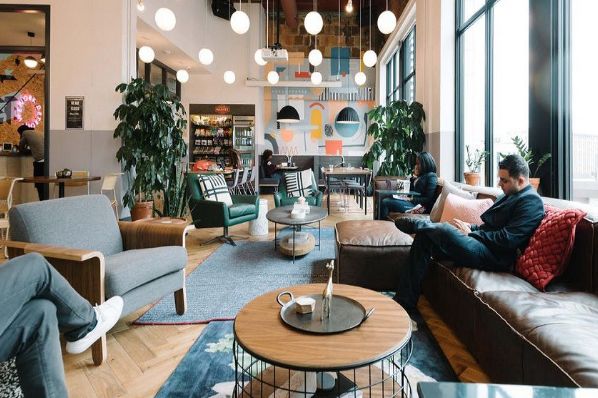Europe’s flexible office space to grow by up to 30% per year over the next five years, says new JLL research Disruption or Distraction. The study unpicks the main drivers of the sector’s boom – including evolutionary changes in how, when and where people work, shifts in lifestyle, and rapid advancements in technology – and provides unique insights into the risks and rewards for both companies and real estate investors in Europe.
Key findings include:
- Globally, the amount of flex space in the 20 largest flexible office markets grew by 30% in 2017 – equivalent to c.1 million m²
- Flexible office space will account for 30% of some corporate portfolios by 2030.
- The market is split into three types of flex space user:
- Conservative: low percentage of flex space in their current portfolios; zero/limited expansion planned
- Experimental: low to moderate percentage of flex space in existing portfolios; up to 10% and beyond in next 3-5 years
- Visionary: significant usage of flex space; clear and ambitious plans for widespread adoption, reaching upwards of 20% of portfolios
- Barriers to flex space adoption include concerns around brand dilution, cost, security and confidentiality. But similar risks are associated with non-adoption, around staff retention and attraction, as well as being perceived as stale.
- With over 700 flex space providers in the industry, consolidation is inevitable and a downturn would accelerate this process. The well-capitalised and experienced providers with geographical diversification will flourish, as well as innovative and niche operators providing a next-generation offer.
- Investors who need to balance the need for stable long-term income with occupiers seeking flexibility face a number of challenges, from understanding how flexible space will impact asset valuations and market transparency, to the effect on supply and demand dynamics, lease lengths and yields.
- In response, some landlords and developers will consider establishing their own flex space concepts; collaborating with existing providers; and looking at M&A. Landlord-initiated concepts are burgeoning in cities such as Amsterdam - where they account for 25% of all flex space - London and Paris.
Pierre-Paul Verelst, Head of Research, BeLux, JLL, added: “Flex is definitely the biggest event on the Brussels office market this year. International and local players are expanding fast and almost all new projects have flex space included, some of the biggest Belgian landlords like Befimmo, Cofinimmo, and Leasinvest to name but a few have even their own initiative. The rate of adoption by corporates is maybe slower than in other markets but, as in many situations, Belgium and Brussels more specifically eventually join the global trends with a few years delay. In transaction terms, the level of 50,000m² has already been reached this year, i.e. nearly 20% of take-up year-to-date.”
Dan Brown, Head of Flex Space, EMEA, JLL, commented: “The rise of flex space is resulting in one of the biggest shifts across the real estate industry that we’ve ever seen. The consumerisation of real estate, which we’ve already witnessed in hospitality and retail, is reshaping business models and investment strategies alike. Our research shows how different markets and different companies are moving at varying speeds, and as the dramatic growth showing no signs of slowing, companies, investors and developers must keep on top of the evolution to understand what this means for their specific business ambitions.”
Alex Colpaert, Head of Offices Research, EMEA, JLL, added: “For investors, flex space offers new opportunities for those who embrace innovation and change, but with no one-size-fits-all approach, it’s not without its challenges. What is clear, though, is that it’s here to stay and is having a real impact on Europe’s office investment environment. Investors should look closely at what’s happening and decide on the most appropriate response for them, whether that’s adopting flexible providers into their buildings, or adapting their strategies to provide their own flexible solutions.”















